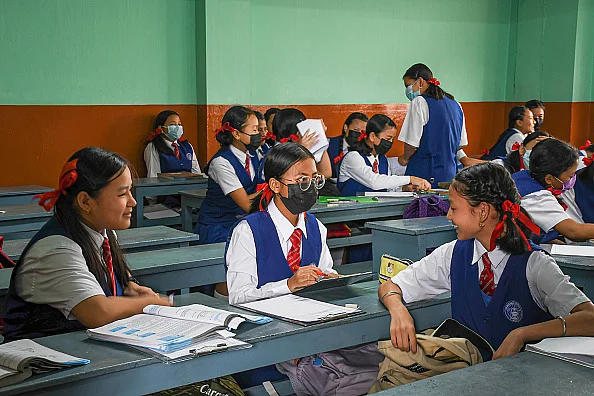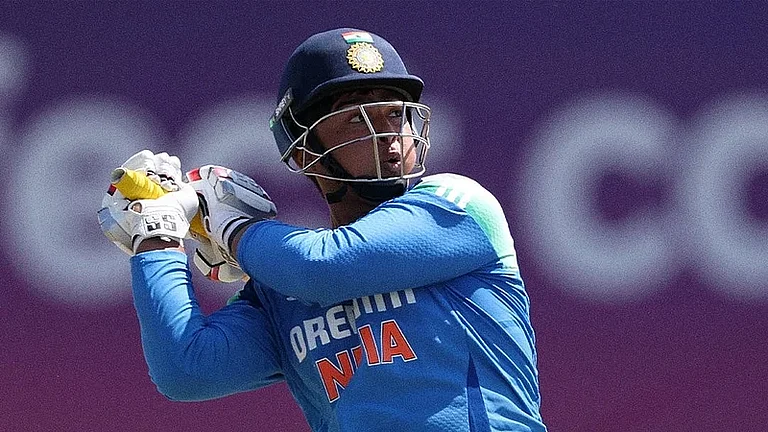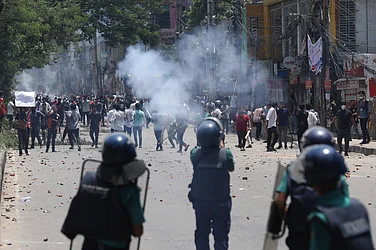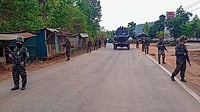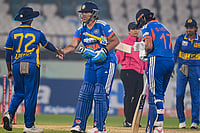While at least 86.8 per cent of youth are enrolled in educational institutions in India, most of them continue to struggle with basic arithmetic and reading skills well into their teenage years, according to the Annual Status of Education Report (ASER) 2023 released by Pratham Foundation on Wednesday. The survey aims to analyse the educational abilities, enrollment, and aspirations of children in rural India.
This year's survey, emphasises on assessing the youth's proficiency in applying reading and math skills to everyday scenarios and their digital literacy especially amid the increasing demand for digital skills.
The survey specifically targets the 14-18 age group in India, given the country's status as having the largest youth population globally. It was conducted in 28 districts across 26 states, reaching a total of 34,745 youth. One rural district was surveyed in each major state, with the exception of Uttar Pradesh and Madhya Pradesh, where two rural districts were surveyed.
Here are some key findings from the report:
High youth enrolment
Overall, 86.8 per cent of 14-18-year-olds were found to be enrolled in an educational institution. Out of all the surveyed youth, 52.5 per cent were reported to be enrolled in standard X or below, 27.6 per cent in standard XI or XII, 6.7 per cent for undergraduate or other (certificate or diploma course) and 13.2 per cent were not enrolled.
The percentage of youth not enrolled in any school or college was highest for 18 year olds at 32.6 per cent.
Meanwhile, 23.6 per cent females and 24.4 per cent males of 17-18 years of age discontinued their education and among reasons for doing so, the most common reason among females was family constraints and among males was lack of interest.
Out of the students enrolled in XI or higher, the most popular stream among enrolled youth was arts/humanities at 55.7 per cent followed by STEM at 31.7 per cent.
Among those who picked humanities, 60.6 per cent were females and 49.7 per cent were males. STEM seemed to be more popular among males at 36.3 per cent females at 28.1 per cent.
Boys outperform girls in reading, arithmetic tasks
When given calculation-related tasks like calculating time, adding weights, measuring length using a ruler and applying the unitary method, males were found to do better than females across all everyday calculations. However, at least 40 per cent of this age group still cannot read sentences in English.
To assess whether youth are able to read and understand simple instructions, the youth were given a task where they were shown a picture of an O.R.S. packet and asked some questions regarding the information given on it. More males (69.2 per cent) were able to answer at least 3 out of 4 questions than females (61.7 per cent).
When it came to financial calculations, males outperformed females across all financial calculation tasks like managing a budget, applying a discount, and calculating a loan repayment. But among rural youth, only 43.3 percent of them are able to solve a simple 3-digit by 1-digit division problem.
High digital access but less knowledge of online safety
Close to 90 per cent of all youth had a smartphone in the household and knew how to use it. Of those who could use a smartphone, males (43.7 per cent) were more than twice as likely to have their own smartphone than females (19.8 per cent).
Females were less likely to know how to use a smartphone or computer as compared to males.
Slightly over a quarter of all youth reported having used a smartphone to access online services such as making online payments, filling a form, paying a bill or booking a ticket. However, males were more likely to have accessed at least one of these services (37.6 per cent) than females (19 per cent).
Further, almost half of them had no knowledge of how to be safe online - 52 percent were able to report/block a profile; 48 percent know how to make a profile private and 52 percent know how to change a password.
Women do more household work than men
Youth, both enrolled and unenrolled, were asked if they did any household work like cooking, cleaning, shopping for groceries, etc. on a daily basis and it was found that a higher percentage of females did household work as compared to their male counterparts.
Among all youth, 85.8 per cent of females were reported as doing household work as compared to 65.9 per cent males. The percentage of females engaged in household work increased progressively from 82.6 per cent among those enrolled in class 10 or below, to 86.5 per cent for those in classes 11 and 12, and further to 90.6 per cent for undergraduate students.
While there was also an increase for males, their involvement remained lower than that of females, ranging from 64.4 per cent for class 10 or below, to 68.2 per cent for classes 11 and 12, and finally reaching 69.1 per cent for undergraduate students.
Among those unenrolled, 94 per cent females and 65.7 per cent males were found to be involved in household work.
A higher percentage of males (40.3 per cent) than females (28 per cent) reported doing work other than household work for at least 15 days during the preceding month. Among both males and females, most youth who were working in activities other than household work tended to be working on family farms.
Girls aspired to study after Class 12
A larger proportion of boys than girls reported not wanting to study after Std XII.
Out of all youth surveyed, 44.3 per cent females as compared to 41.2 per cent males aspired to study at least till the undergraduate level. For postgraduate, the percentage was at 21 per cent for females and 18.2 per cent for males.
In the Focus Group Discussions (FGDs), conducted with students in Standard X, XI and XII in eight government senior secondary schools in three districts – Dhamtari in Chhattisgarh, Sitapur in Uttar Pradesh, and Solan in Himachal Pradesh, a similar conclusion emerged across all three locations: girls discussed wanting to study at least to undergraduate level, while boys wanted to discontinue their education after completing their schooling.
Among girls, changing societal expectations regarding the suitable age for marriage played a pivotal role in influencing young women's opportunities for further education. In most cases, except for some instances in Sitapur, girls expressed their intentions to marry only at the age of 21 or 22, allowing them the time to pursue education until then.
During the conversations, girls mostly focused on their future plans based on their household duties. These responsibilities shaped and limited how they saw both their current situation and what they could do in the future.
Most girls wanted to keep going to school for a couple of reasons. First, they believed education would help them become better at managing their homes. Some thought it would teach them values to pass on to their children, while others saw it as a way to learn skills like beauty or tailoring to earn money while taking care of their homes. The second reason was simpler – they just enjoyed coming to school because it gave them a break from their daily routine.
Most boys in the discussions were primarily concerned about earning money as soon as possible. They shared that many boys their age began working while still in school to meet financial needs. In Dhamtari, boys mentioned farming alongside their studies, while those in Sitapur talked about taking up manual labour or working in nearby factories to sustain their education. Notably, boys in Solan did not express the same urgency to work to support their studies.
District-wise data
Among all districts surveyed, the highest rate of youth (14-15 year olds) not enrolled was seen at Khammam in Telangana at 22.1 per cent overall. In the district, 26.0 per cent of the males and 17.4 per cent of the females were not enrolled.
The highest enrollment rate (for 14-15 year olds) in government institutions was seen in West Bengal’s Cooch Behar district at 95.9 per cent. In the district, 93.0 per cent of the males and 98.1 per cent of the females are enrolled.
For youth of 17-18 years, the highest rate of youth not enrolled was seen at Jabalpur in Madhya Pradesh at 59.1 per cent overall. In the district, 57.1 per cent of the males and 60.3 per cent of the females were not enrolled.
The highest enrollment rate in government institutions was seen in Tripura’s South Tripura district at 85.4 per cent. In the district 83.8 per cent of the males and 87.6 per cent of the females were enrolled.






